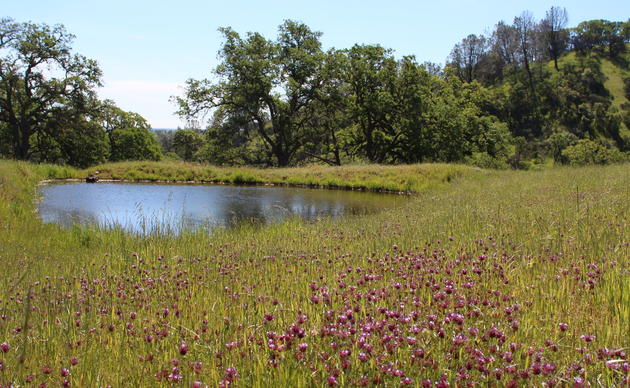
Audubon California continues to advocate for water deliveries to support bird habitat in the Central Valley. Although the wetland refuges have never received their full allotment of water, drought has made it even more difficult to get these habitats the water they need to support migratory birds.
John Muir walked through the San Joaquin Valley in 1868 and described it as "the floweriest piece of world I ever walked, one vast level, even flower bed ... a smooth sea, ruffled a little in the middle by the tree fringing of the river and of smaller cross-streams here and there."
At that time, the meandering Sacramento and San Joaquin rivers and their tributaries created extensive river habitats and wetlands that supported large numbers of migratory birds, wild salmon and large mammals. Then we divided the forests, drained the wetlands and dammed the rivers to build farms and cities. In the 1930s, California built the Central Valley Project and the State Water Project to pump water into these expanding agricultural and urban areas. Soon more than 90% of the valley's wetland habitat was gone, leaving just a patchwork of refuges. Waterfowl populations dropped from historic levels as high as 40 million to as low as 5 million today.
Recognizing this environmental deterioration, Congress in 1992 set minimum water allocations so the refuges could meet basic wildlife needs. A lawsuit and 2006 settlement agreement compelled state and federal government to restore the San Joaquin River.
The refuges, however, have not once received their congressionally mandated amount of water, even in wet years.
Conservation advocates are sympathetic to the challenges that communities and farmers are facing, and understand that there will be cutbacks in water for the environment. All the major laws governing environmental allocations, including the Central Valley Project Improvement Act and the San Joaquin River Restoration Act, already contain stipulations that either reduce water deliveries or halt them altogether during drought.
Central Valley wetlands are of hemispheric importance, providing the most important stopping point on the Pacific Flyway for five million migratory waterfowl, which makes up 60 percent of the Pacific Flyway waterfowl population and 20 percent of the continental population. These wetlands also provide essential habitat for hundreds of other species, including resident waterfowl, such as mallards, other waterbirds, such as tricolored blackbirds, glossy ibis and Sandhill cranes, as well as other wildlife.
Local, state and federal agencies have invested in refuges for decades to protect their value for birds, other animals and nearby communities. Destroying them would only endanger California's already fragile wildlife and degrade the other services refuges provide, such as groundwater recharge, water quality improvements and recreation.
Audubon California will continue to advocate both in Sacramento and Washington, D.C., to ensure that birds get the water that has been promised them.
Support Bobcat Ranch
Your gift supports our work to develop & promote bird-friendly cattle ranching practices in CA and to protect and restore native grassland habitat for birds.




